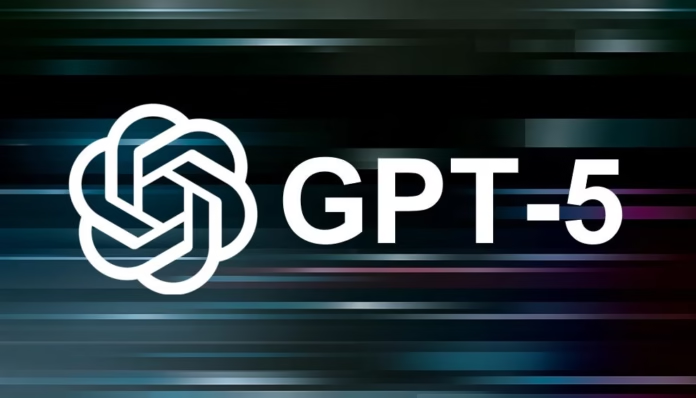The artificial intelligence industry is witnessing a dramatic shift. OpenAI, one of the most influential players in the generative AI ecosystem, has made a groundbreaking move by releasing its most advanced model, GPT-5, for free to all ChatGPT users. This bold step has not only raised user expectations but has also triggered fresh debates around competition, sustainability, and the future of AI accessibility.
Over the past few months, the AI landscape has grown increasingly crowded, with competitors such as Google, Anthropic, and Perplexity racing to showcase their own large language models (LLMs). But OpenAI’s decision to let users experience GPT-5 at no cost could fundamentally reset the rules of the game. The question now is: who wins and who loses in this new AI rivalry?
OpenAI’s Bold Strategy with GPT-5

At the heart of this announcement is a clear strategy: make cutting-edge AI available to the masses. For the first time, free-tier users of ChatGPT can access a reasoning-capable model that brings significant improvements over earlier versions. GPT-5 offers multi-step reasoning, better comprehension of complex queries, and faster, more accurate results.
OpenAI has also designed a tiered access system to balance demand. Free users can access GPT-5 until they reach their usage limit, after which they are shifted to GPT-5 Mini, a lighter but still capable model. Paid subscribers — including Plus, Pro, and Team plans — enjoy higher limits, with Pro users gaining access to GPT-5 Pro, a version designed for advanced and intricate reasoning tasks.
This rollout ensures that the technology is accessible to a broader audience while maintaining premium options for professionals and enterprises. More importantly, it positions GPT-5 as the new standard for generative AI performance, making it difficult for rivals to compete without offering comparable capabilities.
The Intensifying Generative AI Race

The release of GPT-5 has significantly raised the competitive pressure in the industry. For months, companies like Google with Gemini, Anthropic with Claude, and Perplexity with its free AI assistant have been vying for market share. Each has tried to differentiate itself either through open-source models, advanced safety features, or pricing strategies.
However, OpenAI’s latest move changes the dynamics. By eliminating barriers for entry-level users, the company has made GPT-5 the default AI experience for millions worldwide. This not only strengthens OpenAI’s position but also raises the bar for what free AI should deliver.
Competitors now face a dilemma: either lower their own pricing to match user expectations or risk losing traction in a market where advanced reasoning and multimodal capabilities are becoming table stakes. For smaller players, this could mean struggling to sustain their businesses in a space where premium capabilities are suddenly being offered for free.
What Makes GPT-5 Different

While previous versions of ChatGPT were powerful, GPT-5 introduces clear differentiators that set it apart.
Multimodal capability: Unlike earlier models, GPT-5 can process and respond to multiple data types — including text, images, and documents — simultaneously. This allows for more natural, versatile interactions without the need for separate tools.
Improved speed and accuracy: GPT-5 is faster and less error-prone than GPT-4, making it more reliable for both casual and professional use.
Advanced reasoning power: It excels in areas such as coding, financial analysis, scientific problem-solving, and data synthesis, delivering deeper, more thoughtful answers.
User adaptability: GPT-5’s flexibility makes it equally valuable for personal productivity, enterprise workflows, and specialized industries.
These features mark GPT-5 as more than just an upgrade — they represent a paradigm shift in how users interact with AI. The ability to seamlessly combine reasoning with multimodal input opens doors to use cases that were previously out of reach for free-tier users.
The Question of Sustainability
As exciting as the free rollout is, it also raises an important question: can it be financially sustainable?
Building and training large language models like GPT-5 is extremely resource-intensive, requiring massive computational power and billions of dollars in investment. Many AI companies are already struggling to generate revenue that matches their development costs. By making GPT-5 free, OpenAI may be putting pressure not only on its rivals but also on its own ability to sustain the model long term.
However, there is likely a broader strategy at play. By offering GPT-5 for free, OpenAI can massively expand its user base, build engagement, and increase dependence on its ecosystem. This “freemium” approach is similar to strategies used in other industries: offer a taste of the premium product at no cost, then monetize through advanced tiers, partnerships, or integration into larger platforms.
The partnership with Microsoft also plays a critical role. As GPT-5 becomes more widely adopted, it strengthens Microsoft’s suite of AI-enabled tools, from Office to Azure, creating long-term business value even if direct monetization from ChatGPT remains limited.
Winners, Losers, and the Road Ahead
So, who stands to gain from this bold move — and who might lose?
Winners: End users and businesses are the immediate beneficiaries. They now have access to a sophisticated reasoning-capable model at no cost, allowing them to explore applications in education, research, business strategy, and personal productivity without financial barriers. Enterprises using GPT-5 Pro stand to gain even more, with enhanced capabilities supporting complex workflows.
Losers: Competing AI providers face the greatest risk. Companies that rely heavily on subscription models or premium-only features may struggle as users flock to OpenAI’s free offering. Smaller startups, in particular, may find it difficult to sustain themselves in an environment where the market leader is offering advanced AI for free.
Looking ahead, OpenAI’s move could trigger a price war in the AI sector, forcing competitors to rethink their strategies. Alternatively, it could accelerate innovation, as rivals push to deliver unique features that differentiate them beyond pricing.
One thing is clear: OpenAI has fundamentally reset user expectations. Free-tier users will no longer settle for basic AI when they can access advanced reasoning at no cost. Whether this strategy proves sustainable or not, it has already reshaped the industry’s trajectory.
Conclusion
OpenAI’s decision to release GPT-5 for free marks a turning point in the AI industry. It democratizes access to cutting-edge technology while simultaneously raising competitive pressure on rivals. While sustainability remains an open question, the move has already made GPT-5 the benchmark for what modern AI can achieve.
In this new phase of the generative AI race, users emerge as the biggest winners, while competitors scramble to adapt. Whether the future holds an industry-wide price war or a new wave of innovation, one thing is certain: the release of GPT-5 has ensured that the AI rivalry will only get hotter from here.


